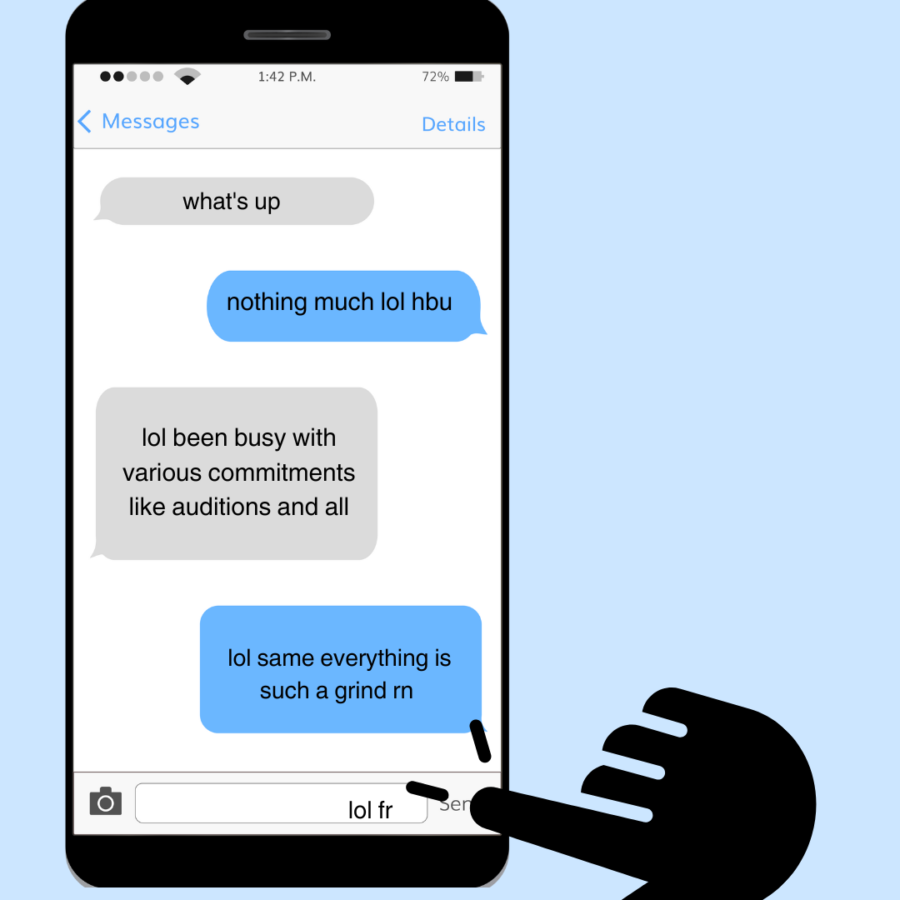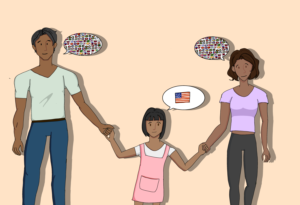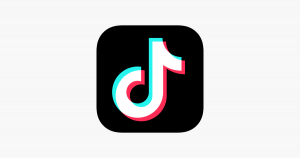The true meaning of “lol”
Despite its widespread definition, we’re usually not laughing out loud when we use the term “lol”.
March 29, 2023
Ask anyone who’s ever been online what “lol” means, and you’ll get a pretty clear-cut answer. It seems like that should be the end of the story, since “lol” is literally an acronym for “laughing out loud.” So then why is it that I am never laughing out loud when I text someone “lol?”
Case in point: a recent text conversation where I asked my friend to do me a favor. My reasoning? “lol been busy with various commitments like auditions and all.” If we strictly consider “lol” to mean “laughing out loud,” this text makes no sense at all, and might even have rude implications.
But in his landmark essay, linguist John McWhorter argues that the “lol” being used in this content actually doesn’t mean “laughing out loud,” instead signaling “basic empathy between texters.”
McWhorter goes on to state that “‘lol’ no longer ‘means’ anything. Rather, it ‘does something’ – conveying an attitude – just as the ending ‘-ed’ doesn’t ‘mean’ anything but conveys past tense. ‘lol’ is, of all things, grammar.”
To fully understand McWhorter’s assertion about the word “lol,” we have to take a step back and look at the bigger picture. In almost any real-time communications platform (face-to-face, phone calls, Zoom meetings, etc.) we have many ways to make a conversation personal. We may laugh a little when saying something like “I’m so silly,” or raise our eyebrows when we’re confused.
Furthermore, there are underlying aspects of these communication platforms that make conversations through them personal. When I talk to a friend, the voice and intonation that I hear would be different from what I hear when talking to my dad. On the other hand, text conversations with certain friends are (visually) the exact same as those with my dad.
The loss of the minutiae of conversation makes texting the most impersonal form of communication. Despite how impersonal it is, though, I’m drawn to texting. Almost every single one of my friends mainly interacts with me by texting, and in the vast majority of those conversations we use “lol” as a Swiss-army knife in our messages.
Yes, we use it to convey empathy, but we also use it to convey other feelings; In the middle of a conversation about college interviews, a friend once texted me “also i just got my icl offer lol????,” using the phrase and several question marks to convey a sense of confused elation and to highlight the irony of suddenly getting into Imperial College London while casually texting about colleges. So “lol” means significantly more than “laughing out loud:” it’s an ambivalent term that can point out the irony of a situation.
We’re also not just limited to a basic “lol.” Minor variations like adding extra l’s (lolll) or caps locking (LOL) give us some control over how our use of the phrase is perceived in different situations, similar to how we laugh differently in different situations. The “awkward laugh” is very different from “the-funniest-joke-I’ve-heard-in-decades laugh.”
In fact, an article in The Atlantic by Caleb Madison (whose subtitle, “[lol] makes virtual communication feel more human,” inspired this article) had a dictionary for variations on the classic “lol.” The numerous different kinds of lol further codify it as grammar and not an abbreviation; while “lolll” isn’t an acronym for anything, we still understand it as a purposeful subversion of “lol” just as we understand Toni Morrison’s purposeful omission of syntax in Chapter 22 of Beloved.
These small variations and the subtle meaning changes they carry have kept me using the word lol in place of emojis. I sent and received “lol” a total of 42 times in the last week (making it the sixth-most used word in my text conversations, under the assumption that my word usage in text convos follows the same general distribution as word usage in books), which far outpaces the one use of laughing emojis I found over the same time period. The two laughing emojis featured on Apple phones are fewer in number and less diverse than the seemingly endless variations on lol, which means that the emojis are not very personal and generally insufficient for humanizing texting.
McWhorter’s thesis is certainly a great bedrock for understanding how we use “lol” today, but “lol” is (surprisingly) not a recent invention. It was already in use over three decades ago, as it was featured on an ASCII blog post about “colorful communicating” from 1989.
Let that sink in. People were using “lol” for years before the fall of the Soviet Union.
Most of the 23 text abbreviations in that 1989 post have died out, and I only recognize four as being in use now. Of those four, only “lol” has taken on a meaning greater than its original. This might seem like a trivial fact, but it reveals that “lol” has only survived for so long because of its greater meaning.
In 2015, Facebook conducted a study of how people e-laugh, measuring how frequently different laughing messages (such as haha, lol and the emoji pictured above) were included in posts and comments. Facebook’s study found that only 1.5% of people used “lol,” with more people using each of “haha,” emojis and “hehe.” Furthermore, the median age of lol users was significantly higher than the median age of those using other e-laughs, implying that lol is vestigial from the days of using flip phones, where its 3-character length made it the prime candidate for e-laughing. These results prompted some news outlets to pronounce lol dead.
But “lol” persists. As evidenced by its frequency in my texts, “lol” has become ubiquitous amongst my Gen Z (read: young) friends, though not because we need to reduce the amount of characters it takes us to tell people that we’re laughing.
So while “lol” originally meant “laughing out loud,” it has since transcended that meaning, encompassing a range of emotion far greater than its original abbreviation. Instead, “lol” and its variations allow us to better articulate our emotions, helping us feel comfortable when conversing online. Though using those three letters will never convey as much meaning as body language or intonation, it still holds more meaning than any dictionary definition would be able to impart.




